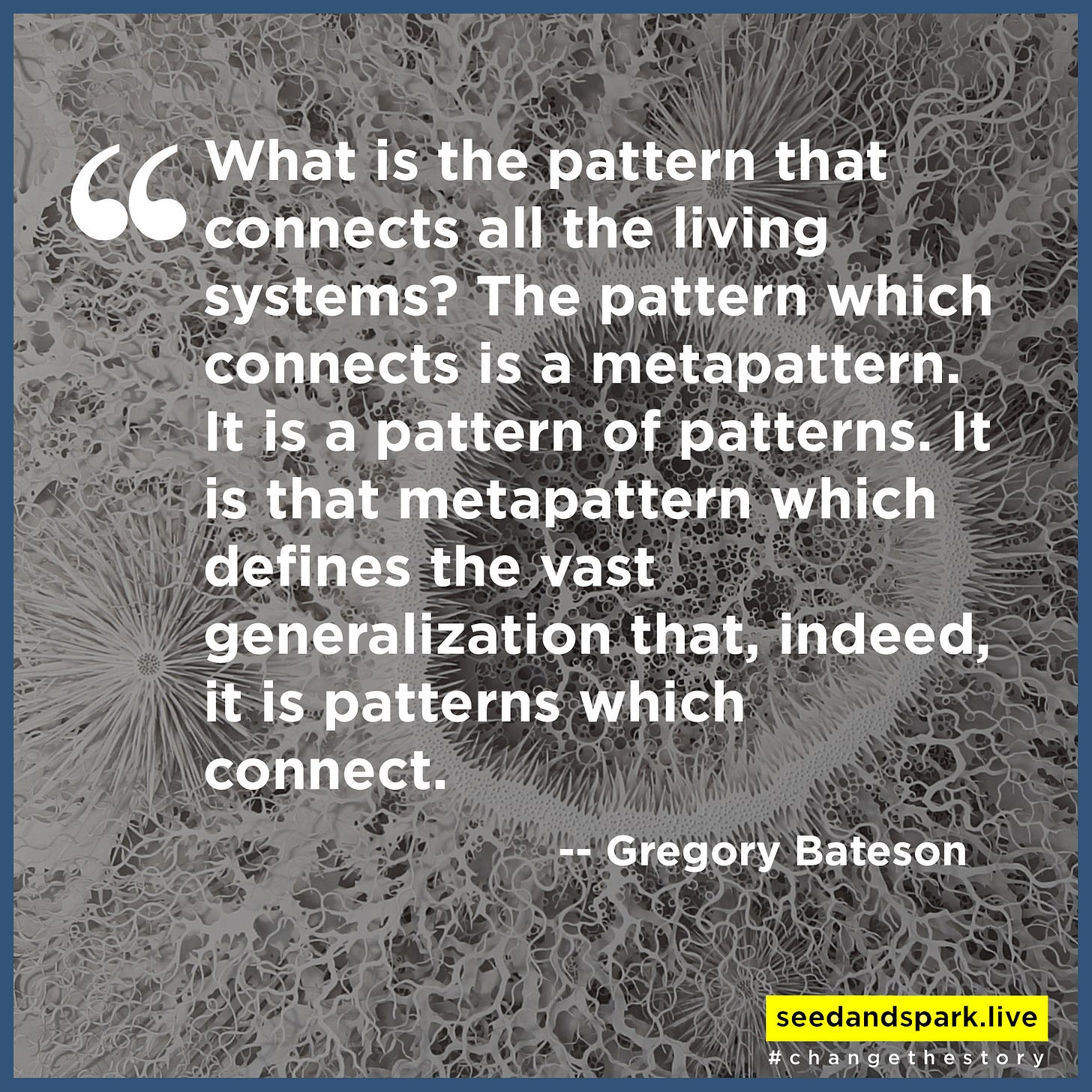The Second Feature of a Flourishing School
Principle Two: INFORMATION (or what, & why, we notice)
What is the meta-pattern of life that thrives? And how can we homo sapiens start to apply those insights towards the way(s) we all learn and live?
A few weeks ago, I shared the first in a series of seven articles that are designed to answer these questions -- based on the seven design principles of living systems (Don’t worry if you missed that one; it’s right here).
This week, let’s look at principle two: INFORMATION -- and how it travels through your community’s thoughts and actions.
Principle Two: Information (Open It Up)
THE CHALLENGE
Your second challenge is to ask: What types of information are most meaningful to your school or organization? In what ways does your organizational culture ensure access to that sort of information (or not)? Are there any types of information you prioritize that may not actually be in line with what your community most wants and needs? And finally, where are your community’s blind spots -- and how might you open up new sources of information that can make them more visible to you?
THE CONTEXT
Amidst the deluge of modern daily life, what deserves our attention?
This is, relatively speaking, a new question for us to consider.
Until recently, homo sapiens were an incremental species. Our ancestors only learned to read 200 generations ago. The first universities are just 1,000 years old. We didn’t even develop a germ theory of disease until the late 19th century.
Before, in other words, it took many generations for big changes to occur.
Today, however, we are experiencing multiple, massive shifts to the structure and flow of human life in a single generation.
Whereas in the past, we collected the world’s knowledge in an encyclopedia, in the present, we co-construct it via Wikipedia -- or co-create it with, yes, ChatGPT.
What will we do in the future? And how can we survive the deluge of information in our modern, networked world without feeling as though we are drowning in, well, TMI?
As always, the most valuable lessons for our human systems are to be found in the natural world, with its several billion years’ worth of trial and error.
As I discussed in the first article of this series, a paradox of living systems is that each organism maintains a clear sense of individual identity within a larger network of relationships that help shape that identity. But whereas establishing a clear sense of “who’s there” is the building block of any living system, the determinant of whether that system can evolve and adapt is its relationship to the very thing that is overwhelming us in our hectic modern lives.
This insight is counter-intuitive. Yet nature reveals that anything that disturbs a living system is also what helps it self-organize into a new form of order.
Growth comes from disequilibrium, not balance. And information is not power; it’s nourishment -- but only when and if the information that is absorbed is the kind that is most meaningful and relevant to the system that absorbs it.
“We suffer from a fundamental misperception of information,” says organizational theorist Margaret Wheatley. “We have treated it as a thing, as a physical entity, which has kept us from contemplating its other dimensions -- the content, character, and behavior of information. We expect information to be controllable, stable, and obedient. We expect to be able to manage it. In the new science, however, information is a dynamic, changing element. Without information, life cannot give birth to anything new. Information is what allows for the emergence of a new order.”
Although our relationship to information has always shifted with each new innovation -- from the alphabet to the smartphone to, yes, OpenAI -- the new order emerging around us has, in fact, been predicted for generations.
As far back as 1937, H.G. Wells (of course it was H.G. Wells) envisioned a “sort of cerebrum for humanity, a cerebral cortex which will constitute a memory and a perception of current reality for the whole human race.” Generations later, Marshall McLuhan picked up the thread to suggest that Wells’ cerebrum had, in 1967, finally arrived.
“Today,” he wrote, “we have extended our central nervous systems in a global embrace, abolishing both space and time as far as our planet is concerned. Rapidly, we approach the final phase of the extensions of man -- the technological simulation of consciousness, when the creative process of knowing will be collectively and corporately extended to the whole of human society.”
Today, of course, the global brain and body Wells and McLuhan anticipated is fully upon us -- for better and for worse. What should we do with the daily flood of bits and bytes it is producing -- and how should it impact the ways we think about preparing our children to build a better world?
Simply, to become more alive and adaptive, we must open our learning systems to information the way a living system does. “We need to have information coursing through our systems, disturbing the peace, imbuing everything it touches with the possibility of new life,” Margaret Wheatley explains. “We need, therefore, to develop new approaches to information -- not management but encouragement, not control but genesis.
“How do we create more of this wonderful life source?”






